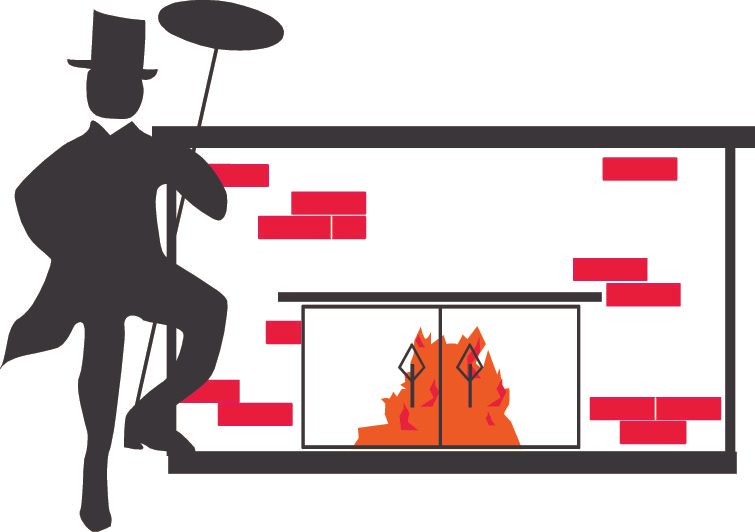There are many reasons why a chimney may need to be relined. In older homes built before 1940, chimney liners were not part of the building code. We have learned over the years from testing done by the National Bureau of Standards is that unlined chimneys are inefficient (heat moves through the brick walls of the chimney quickly) and dangerous, woodwork/framing adjacent to the chimney can catch on fire.
Most chimneys today are lined with terra-cotta clay flue tiles. However, there are some potential problems with clay flue tiles. One of the most common problems we see is that during construction, the clay flue tiles are joined together with regular mortar instead of refractory mortar. The expansion rate of the clay flue tiles and the regular mortar are different. This difference in expansion rates can cause the clay flue tiles to crack as heat rises up through the flue. A rapid rise in temperature will also cause a clay flue tile to crack because it cannot quickly absorb and distribute the heat evenly. Oftentimes, cracked flue tiles are the result of starting a hot fire too quickly in a cold chimney or when you’ve had a chimney fire.
Today’s high efficiency oil burners and boilers release a great deal of condensation in their flue gases. This can cause the clay flue tiles to spall (the condensation causes the flue tile to deteriorate and pieces of the tile begin to flake off). Eventually the tiles will deteriorate and possibly cause a blockage of the flue.
At Fireside Sweeps, LLC, we follow the NFPA 211 standards for chimney lining as well as the stainless steel liner manufacturers’ specifications and requirements in order to meet the UL 1777 listing for solid fuel.
For more information, see Homeowners Information.
